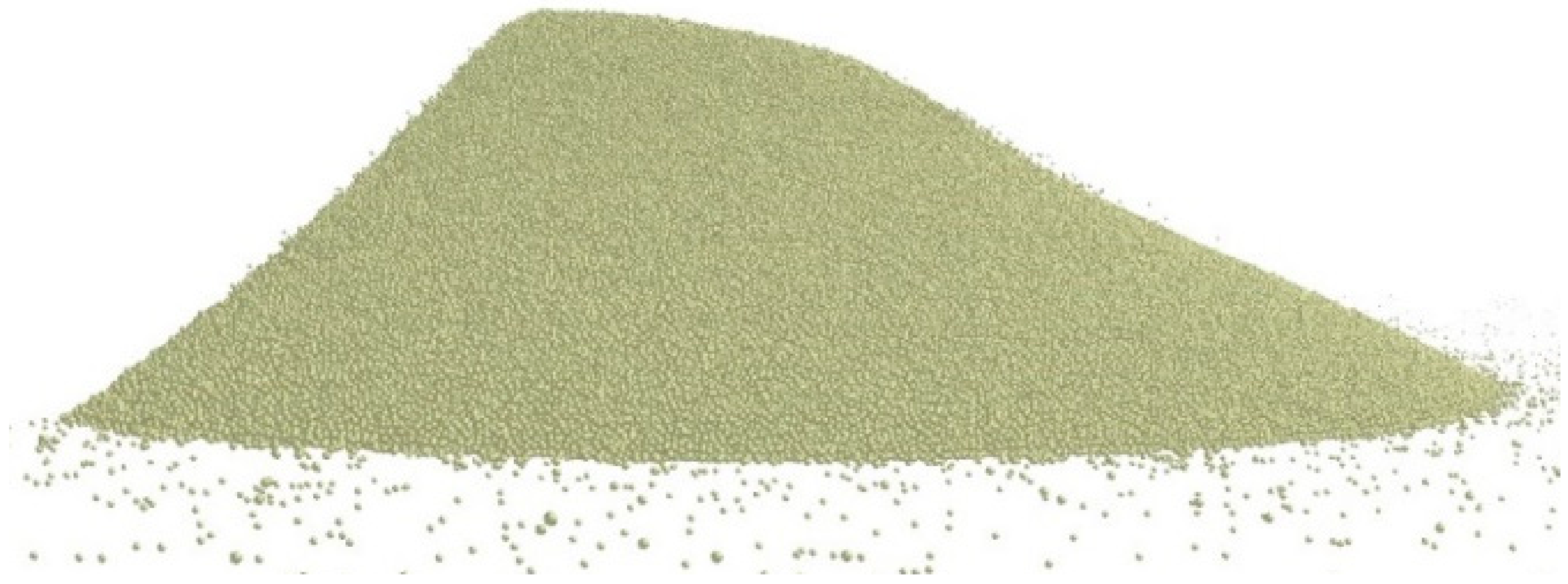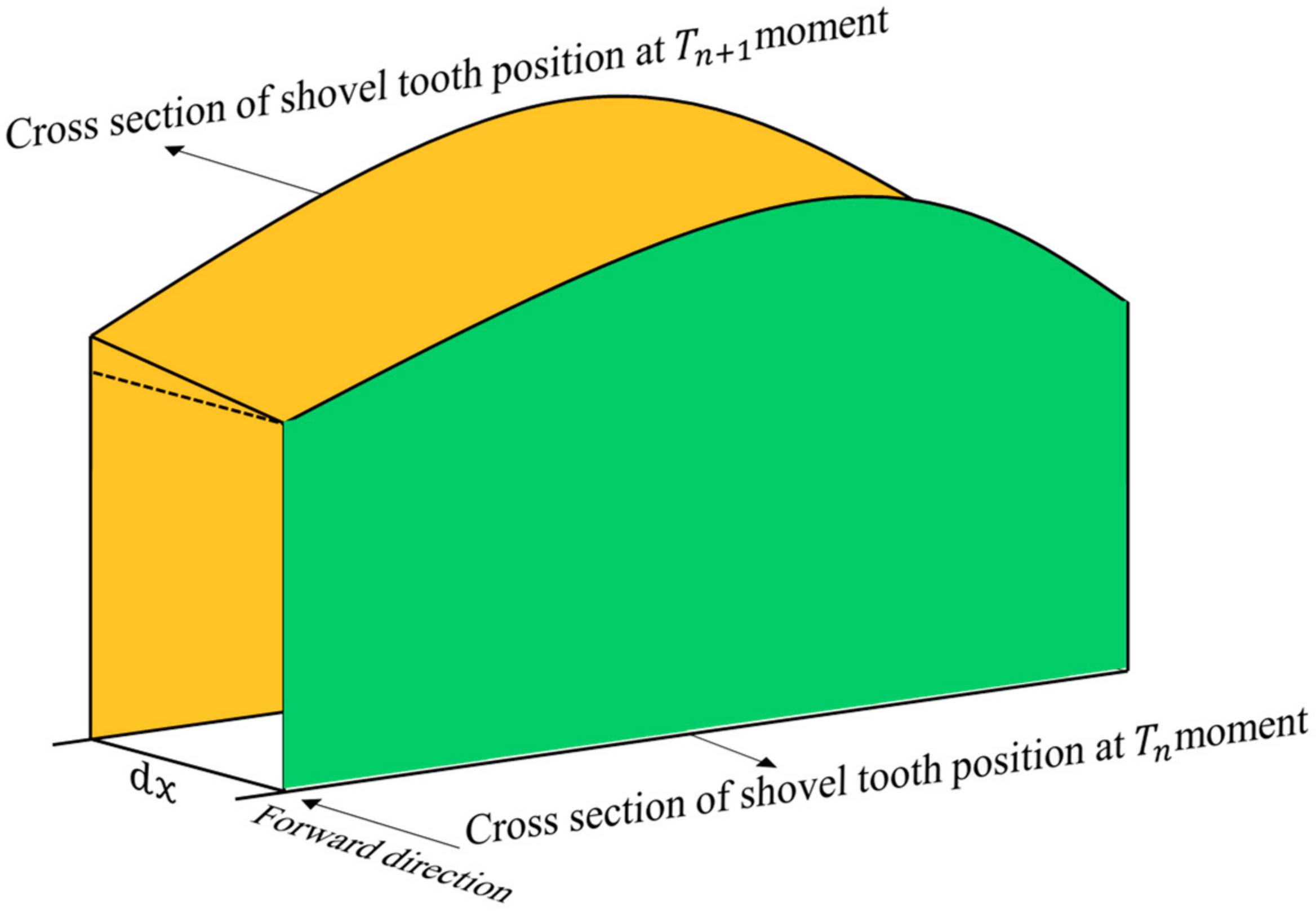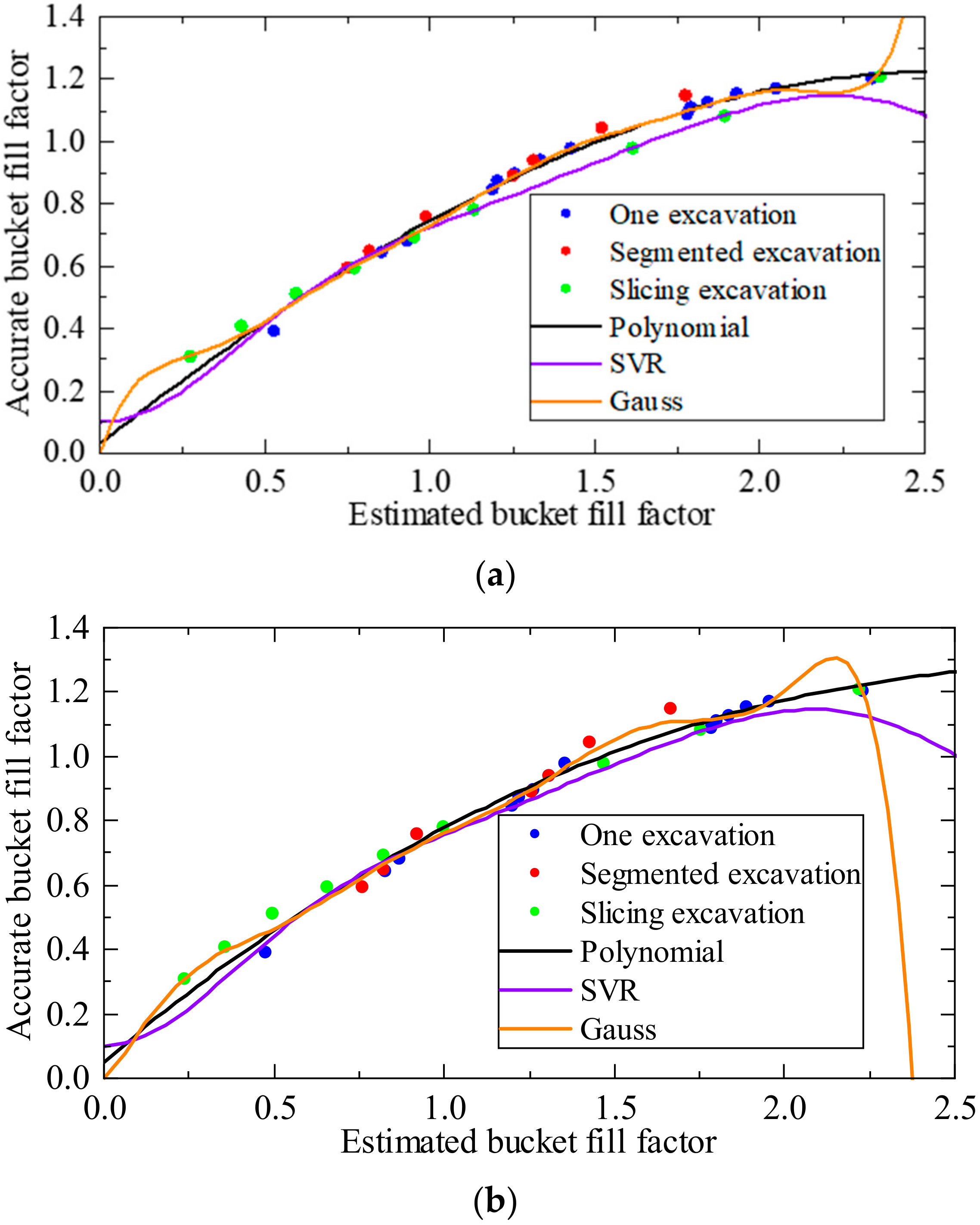1. Introduction
A loader is a piece of earth and stone construction machinery and equipment widely used in mining, construction, water conservancy, urban construction, among other contexts. Its main function is to shovel and transport bulk materials such as soil, sand, and gravel and complete engineering tasks such as bulldozing and lifting. It can not only reduce the labor intensity of construction personnel but also improve the construction speed and the project quality.
The related research on loaders can be divided into two major directions. The first is system control optimization, performance optimization of parts and components, electrification, etc., which are carried out to improve the economy of the loader, save energy, and protect the environment. Jun G et al. [
1] proposed a new energy alternate recovery and utilization system to recover the potential energy generated in the lifting and lowering of excavators, Yang Y et al. [
2] used an objective optimization algorithm to optimize the parameters of a new continuously variable transmission system for a loader to obtain better power transmission performance, and He X et al. [
3] mentioned the importance of hybrid (HES) construction machinery to protect the environment and introduced the control strategies and challenges of hybrid construction machinery. The second is online fault diagnosis, intelligent shifting, vibration and noise reduction, etc., which are carried out to improve the intelligence of the loader and improve the operational efficiency, safety, and driver comfort of the loader. Chen Z et al. [
4] extracted the signs of loader gear noise and made fault diagnosis of the loader gearbox based on ICA and SVM algorithms, Wu G [
5] used a neural network approach to determine the complex mapping relationship between loader gears and the current operating conditions, which improved the shift response speed and shift quality, Zhao H et al. [
6] optimized the parameters of the loader suspension to improve the driving comfort of the loader driver. Therefore, compared with the early loaders, the current loaders have been greatly improved in economy, safety, and comfort. In recent years, the electrification, intelligence, and unmanned operation of loaders have become a new research hotspot. Dadhich et al. [
7] gave a detailed introduction to the prospects and challenges faced by the intelligent and unmanned construction machinery. when the loader is unmanned, the bucket fill factor becomes an important optimization objective of the autonomous excavation strategy of the loader, and its importance is self-evident. Therefore, this paper focuses on how to effectively predict the bucket fill factor of a loader.
Bucket fill factor prediction is a prerequisite for unmanned construction machinery and has attracted the attention of scholars. In recent years, Chen Yu et al. [
8] proposed the SPC (Statistical Process Control) method to judge whether the test process of the loader bucket fill factor is stable and whether the test data are available. This method helps to ensure the validity of the loader bucket fill rate test data and correctly evaluate the bucket performance. Pengpeng Huang et al. [
9] tried to mathematize the shoveling process to establish a mathematical model of the bucket fill factor of the loader during the shovel loading process. However, many idealistic assumptions were made during the study, so the applicability of the model is not good. Dadhich Set al. [
7] mentioned in their previous work that the pressure in the loader cylinder can be used to represent the mass of the material in the bucket, but if the density information of the material to be excavated is unknown in advance, it is not possible to obtain the volume of the material in the bucket and the corresponding value of the bucket fill factor. To address this issue, Anwar H et al. [
10] proposed to use a camera to photograph the bucket and estimate the volume of the material inside the bucket based on an image processing algorithm. However, the accuracy of the algorithm heavily depends on the bucket at the exact constraint position. Therefore, Guevara Jet al. [
11] proposed to estimate the volume of the material in the bucket through segmentation, matching, and volume calculation based on the three-dimensional point cloud data of the material in the bucket. However, when the bucket full rate is high, this method cannot accurately extract the edge contour of the bucket, and the prediction error of the bucket fill factor increases up to 20%. Similarly, Lu J et al. [
12] proposed to identify the bucket fill factor of a loader based on machine vision and bucket position information, but the method is not robust to environmental changes. Subsequently, Lu J et al. [
13] proposed a neural-network-based method for predicting bucket fill factor, which relies on the classification of environmental factors to improve the robustness of the model to the environment. It is worth noting that all the previously mentioned methods for identifying bucket fill factor can only work after the loader has completed the shoveling action. R.J. Sandzimier R J et al. [
14] used statistical methods to find the relationship between the excavator shovel trajectory and the bucket fill factor and tried to obtain the optimal excavator trajectory planning based on this. However, this method requires a lot of experimental data, and the experiment needs to be repeated when the size of the attachment changes. Filla R [
15] et al. simulated the material shoveling process with the EDEM software and summarized the shovel trajectory offset map for a specific bucket to obtain a certain bucket fill factor. However, the offset method proposed by the authors not only requires a large number of simulations but also cannot summarize well the relationship between the bucket fill factor and the shovel trajectory. From the above analysis, it can be seen that the predicted completion time of the bucket fill factor of the loader can be divided into after the completion of shoveling and before the completion of shoveling. Additionally, the prediction of bucket fill factor before shovel excavation completion is more suitable for the automation of the loader and is the focus of this paper. Based on the analysis of the existing studies, this paper proposes a method for predicting the bucket fill factor of loader based on the three-dimensional information of material surface. Our method can achieve accurate bucket fill factor prediction before excavation and provide technical support for optimizing the operation trajectory of the loader under autonomous excavation.
The rest of this paper is organized as follows.
Section 2 describes the bucket fill factor prediction method proposed in this paper.
Section 3 introduces the construction of the co-simulation model of shovel.
Section 4 presents the implementation of the proposed bucket fill factor prediction method. Finally,
Section 5 concludes the research work of this paper.
5. Discussion
In practical applications, the use of lidar, binocular camera, or depth camera is essential to realize the unmanned construction machinery. At present, the use of these sensors for the 3D reconstruction of the global or local operating environment of the loader has been one of the hot spots of research and has made some progress. Combined with the method proposed in this paper, the bucket fill factor of the loader after shoveling on this preset trajectory can be calculated based on the surface 3D information of the material pile and the preset planning trajectory, and then the trajectory planning algorithm is prompted to find a suitable operating trajectory with bucket fill factor, which has potential in this aspect.
Due to the complexity of the actual shovel loading process and the limitations of the shovel loading simulation, the research work of this paper still needs to be deepened and expanded. Specifically, the experimental data are obtained from the simulation results of the loader shoveling a material, and the simulation verification of a variety of materials needs to be performed. Moreover, the proposed method is only verified in the simulation environment, and a large number of verification experiments are required. Therefore, in future research, simulations of the shoveling process for many different materials and verification experiments will be conducted to optimize this research work.



















